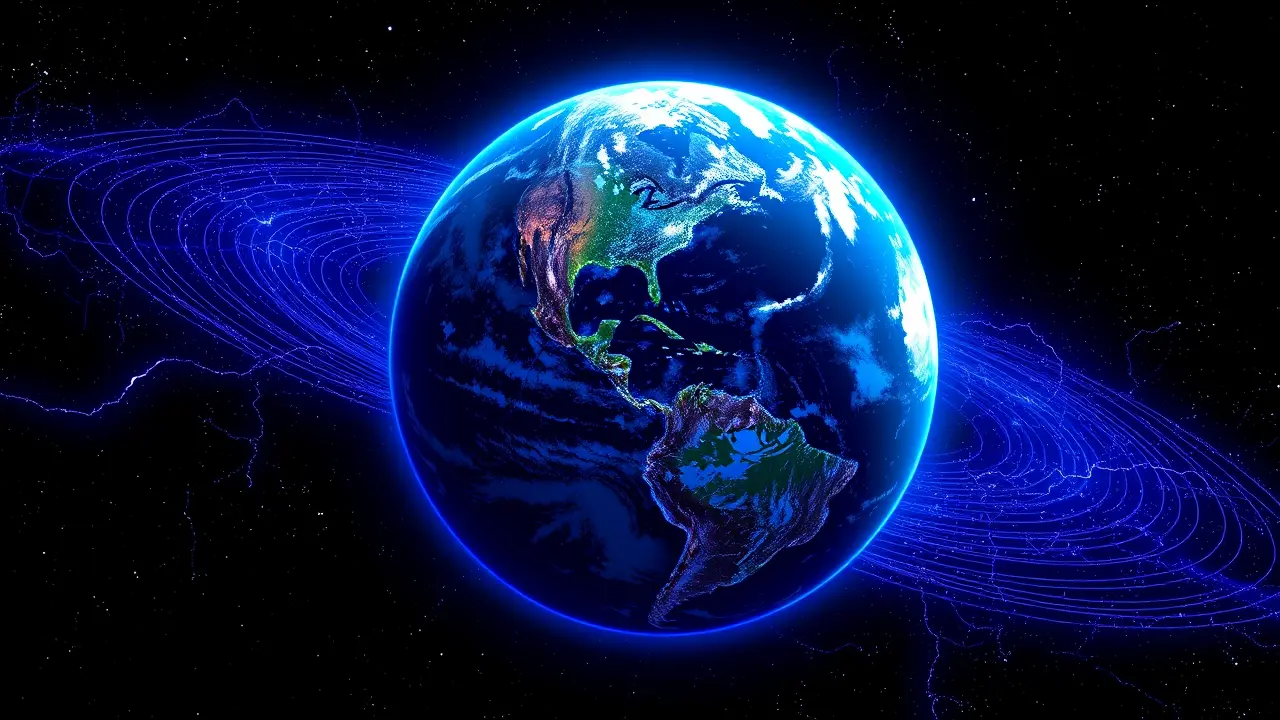
Scienceearth science
Scientists shocked by reversed electric field around Earth
TH
Thomas Green
2 days ago7 min read
In a revelation that has sent shockwaves through the astrophysics community, our fundamental understanding of Earth's protective magnetic bubble has been dramatically upended. For decades, the standard model taught in textbooks depicted Earth's magnetosphere with a straightforward electrical personality: a positively charged morning side and a negatively charged evening side, a cosmic yin and yang shaped by the relentless solar wind.This elegant symmetry, however, has just been shattered. A powerful consortium of researchers from Japan's leading institutions—Kyoto, Nagoya, and Kyushu Universities—has delivered a stunning counter-narrative, leveraging cutting-edge satellite telemetry and sophisticated computer simulations that reveal our planet's magnetic shield is far more complex and counter-intuitive than we ever imagined.The data paints a startling new picture: the vast expanse of the magnetosphere on the sun-facing morning side is, in fact, predominantly negative, a complete inversion of the long-held dogma. This isn't a minor fluctuation but a fundamental rewiring of our planetary defense system's electrical architecture.Imagine discovering that a river you've known your entire life actually flows uphill; the disorientation and excitement in the scientific world is palpable. The researchers did find one anchor of predictability amidst this chaos: the polar regions stubbornly cling to their expected polarities, acting as familiar landmarks in a suddenly alien magnetic map.Yet, this only deepens the mystery, as the equatorial zones have executed a full polarity flip. The implications of this discovery are profound, rippling far beyond academic curiosity.Our entire technological civilization, from the GPS satellites that guide our cars to the power grids that light our cities, operates within this electromagnetic environment. A misunderstood magnetosphere means miscalculated risks from solar storms, those colossal eruptions from the sun that can induce devastating geomagnetic currents.The Carrington Event of 1859, which caused telegraph lines to spark and fail, serves as a historical precedent for what can happen when solar fury meets our planet's magnetic field. With our modern, hyper-connected world infinitely more vulnerable to such space weather, an inaccurate model is like navigating a minefield with an outdated map.This discovery forces a comprehensive re-evaluation of the complex plasma physics governing the interaction between the solar wind and our magnetosphere. It suggests that the processes of magnetic reconnection—where field lines break and explosively reconnect—are more turbulent and asymmetrical than our models accounted for.Experts are now scrambling to integrate this new paradigm, pondering whether similar reversals exist around other magnetized planets in our solar system, potentially reshaping our search for habitable worlds. The quest to understand our place in the cosmos, a drive that fuels visionaries like Elon Musk in his Martian ambitions, demands a precise understanding of our own celestial backyard first. This single finding, born from Japanese scientific rigor, has not only corrected a long-standing error but has flung open a new door of inquiry, reminding us that the universe, even the space immediately surrounding our pale blue dot, is always ready to surprise us with its hidden complexities.
#featured
#Earth
#magnetosphere
#electric field
#satellite data
#Kyoto University
#space weather
#research breakthrough
Stay Informed. Act Smarter.
Get weekly highlights, major headlines, and expert insights — then put your knowledge to work in our live prediction markets.
Comments
It’s quiet here...Start the conversation by leaving the first comment.
© 2025 Outpoll Service LTD. All rights reserved.